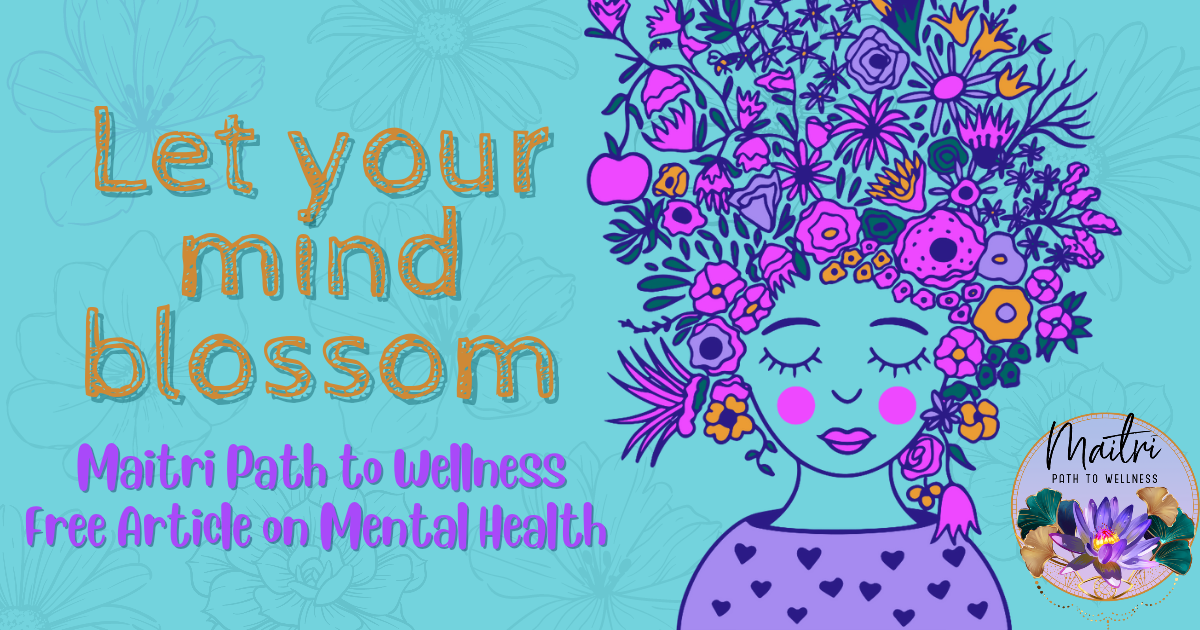Introduction
Drug addiction is a complex issue that affects millions of individuals worldwide. Understanding the signs of drug addiction is crucial for early intervention and effective treatment. This comprehensive guide will delve into the various indicators of a substance use disorder, highlighting the importance of recognizing these signs and seeking professional help.
Drug addiction, also known as substance use disorder, is a chronic condition characterized by compulsive drug seeking and use, despite harmful consequences. It is a complex disease that affects the brain and behavior, leading to an inability to control substance use.
Various factors contribute to the development of drug addiction. Genetic predisposition, environmental influences, underlying mental health disorders, and the effects of prolonged drug use on brain chemistry all play a role. When individuals engage in substance abuse, it can have severe consequences on their physical health, including organ damage, cardiovascular issues, respiratory problems, a weakened immune system, and an increased risk of infectious diseases. Additionally, drug addiction takes a toll on mental well-being, often leading to the development or worsening of mental health disorders such as anxiety, depression, and psychosis. Substance abuse may become a means of self-medication for individuals struggling with their emotional well-being.
Common Signs of Drug Addiction
Recognizing the signs of drug addiction is essential in identifying substance use disorder and encouraging individuals to seek help. The signs can be categorized into behavioral, physical, and emotional indicators.
Behavioral signs of drug addiction include drastic changes in appetite and sleep patterns. Individuals may experience significant weight loss or gain and disruptions in their sleep routine. Moreover, those struggling with drug addiction often withdraw from social activities and hobbies, losing interest in activities they once enjoyed. They may also exhibit secretive behavior and engage in frequent lying to conceal their drug use. Desperation for drugs may drive them to engage in risky or illegal activities to obtain their substance of choice.
Physical signs of drug addiction can manifest in various ways. Bloodshot eyes and dilated pupils are common physical indicators. The eyes may appear red and glassy, while the pupils may be unusually large or small. Sudden weight loss or gain can also be a sign of drug addiction. Neglecting personal hygiene and appearance is another physical symptom often observed in individuals struggling with addiction. Additionally, trembling hands, slurred speech, and impaired coordination may be noticeable physical signs of drug abuse.
Emotional signs of drug addiction can have a significant impact on an individual’s overall well-being. Mood swings and irritability are common emotional indicators. Individuals may exhibit sudden and extreme shifts in their mood, becoming easily agitated or angered. Increased anxiety and restlessness are also prevalent among those struggling with drug addiction. Feelings of anxiety may arise when the effects of drugs wear off, leading to restlessness and an intense desire for continued drug use. Furthermore, drug addiction can contribute to the development of depression and a persistent feeling of sadness. Individuals may experience a lack of motivation and a decreased interest in activities they once found pleasurable.
Identifying Specific Drug Addictions
Different types of drugs can lead to specific addiction patterns and exhibit unique signs. Understanding these signs is essential in accurately identifying the substance being abused and providing appropriate treatment.
Opioid addiction involves the misuse of opioids, such as prescription painkillers or illicit substances like heroin. Signs of opioid addiction include pinpoint pupils and drowsiness. Opioids can cause pupils to constrict significantly, and individuals may exhibit excessive drowsiness. Frequent flu-like symptoms, such as nausea, muscle aches, and sweating, are often experienced during opioid withdrawal. Furthermore, a noticeable decline in personal hygiene may be observed, as individuals struggling with opioid addiction may neglect their appearance and overall self-care.
Stimulant addiction, which involves drugs like cocaine and methamphetamine, can lead to distinct signs. Increased energy and alertness are commonly observed among individuals addicted to stimulants. They may exhibit heightened levels of energy and appear more awake and alert than usual. Excessive talking and rapid speech are also indicative of stimulant abuse. Individuals may engage in pressured speech, speaking rapidly and in a frenzied manner. Additionally, stimulant addiction can contribute to symptoms such as agitation, paranoia, and hallucinations.
Sedative-hypnotic addiction involves the misuse of drugs like benzodiazepines and barbiturates, which are commonly prescribed for anxiety or sleep disorders. Signs of sedative-hypnotic addiction include memory problems and confusion. Prolonged use of sedative-hypnotic drugs can impair memory and cognitive function. Individuals may struggle with forgetfulness and exhibit confusion in their thoughts and actions. Slurred speech and poor motor coordination are also physical signs associated with sedative-hypnotic addiction. Individuals may have difficulty speaking clearly and exhibit a lack of coordination in their movements. Mood swings and depression can also be emotional indicators of sedative-hypnotic addiction, as these drugs can contribute to mood disturbances.
Hallucinogen addiction involves the misuse of drugs like LSD, psilocybin mushrooms, and peyote. Signs of hallucinogen addiction are distinct due to the unique effects of these substances. Individuals addicted to hallucinogens may experience a distorted perception of time and reality. They may feel as though time is passing differently or that their surroundings are altered and surreal. Intense visual hallucinations are also characteristic of hallucinogen use. Individuals may see vivid and compelling visuals that are not present in reality. Paranoia and disorganized thinking can also be signs of hallucinogen addiction. Individuals may experience extreme paranoia and struggle with organizing their thoughts and communicating coherently.
Cannabis addiction is specific to the misuse of marijuana or other cannabis products. Signs of cannabis addiction can include increased tolerance and dependence. Regular cannabis use can lead to a diminished response to the drug, requiring higher doses to achieve the desired effects. Lack of motivation and impaired memory are common emotional and cognitive indicators of cannabis addiction. Individuals may experience a lack of drive or ambition, feeling unmotivated to pursue their goals. Additionally, difficulties with memory and cognitive function may be present. Bloodshot eyes and dry mouth, often referred to as “cottonmouth,” are physical signs associated with cannabis use.
Inhalant addiction involves the misuse of chemical substances found in common household products, such as aerosols, solvents, and gasoline. Signs of inhalant addiction can be identified through specific behavioral and physical indicators. Individuals addicted to inhalants may exhibit a strong odor of chemicals on their breath or clothing, indicating recent use. Confusion and disorientation are common signs of inhalant abuse. Prolonged inhalant use can lead to cognitive impairment, resulting in confusion and difficulties with concentration. Nausea, headaches, and nosebleeds are physical symptoms that may accompany inhalant addiction.
Polydrug addiction refers to the concurrent abuse of multiple substances. Signs of polydrug addiction can be complex, as the effects of different substances interact and intertwine. Individuals addicted to multiple drugs may mix and combine substances, leading to increased health risks and potential overdose. It can be challenging to identify the specific effects of individual drugs in cases of polydrug addiction, as the combination of substances may create unique experiences and symptoms.
Seeking Help for Drug Addiction
Recognizing the signs of drug addiction is the first step toward seeking help and initiating recovery. Various treatment options and support systems are available for individuals struggling with drug addiction.
Treatment options for drug addiction include medical detoxification, inpatient rehabilitation programs, outpatient therapy and counseling, and participation in support groups and aftercare programs. Medical detoxification involves supervised withdrawal to help individuals safely manage the physical and psychological symptoms of drug withdrawal. Inpatient rehabilitation programs provide a structured environment for intensive therapy, counseling, and support. Outpatient therapy and counseling offer flexibility for individuals who may not require 24/7 supervision but still need therapeutic interventions. Support groups, such as Narcotics Anonymous, and aftercare programs play a vital role in long-term recovery and relapse prevention.
The role of family and friends in supporting individuals struggling with drug addiction is crucial. Intervention strategies can be employed to encourage a loved one to seek help for their addiction. Creating a supportive environment where individuals feel understood and cared for can significantly impact their recovery journey. Encouraging professional treatment and helping individuals navigate the available treatment options are essential in promoting positive outcomes.
Overcoming the stigma associated with drug addiction is another crucial aspect of seeking help. Breaking the barriers of shame and guilt can empower individuals to acknowledge their addiction and reach out for support. Community resources, helplines, and online platforms provide valuable assistance, information, and guidance for individuals and families affected by drug addiction. Embracing a holistic approach to recovery, which addresses the physical, emotional, and social aspects of addiction, is essential for long-lasting sobriety.
Conclusion
Recognizing the signs of drug addiction is crucial for early intervention and successful treatment. By understanding the behavioral, physical, and emotional indicators, individuals can identify substance use disorder in themselves or their loved ones. Seeking professional help and support is essential in overcoming addiction and achieving long-term recovery. With the right resources, treatment options, and a supportive network, individuals can break free from the grips of addiction and embark on a journey of healing and transformation.
FAQs
How can I tell if someone is addicted to drugs?
Look for behavioral changes, physical signs, and emotional shifts such as secretive behavior, bloodshot eyes, and mood swings. If you suspect drug addiction, it’s important to encourage them to seek professional help.
Are there specific signs for different types of drug addictions?
Yes, different types of drug addictions exhibit unique signs. Opioid addiction may involve pinpoint pupils and flu-like symptoms during withdrawal, while stimulant addiction can result in increased energy and paranoia. Sedative-hypnotic addiction may cause memory problems and confusion, while hallucinogen addiction can lead to distorted perception and intense visual hallucinations.
Can drug addiction be treated?
Yes, drug addiction can be treated. With various treatment options such as medical detoxification, inpatient rehabilitation programs, outpatient therapy, and support groups, individuals can receive the necessary help and support to overcome addiction and achieve recovery.
How can I support a loved one struggling with drug addiction?
Supporting a loved one struggling with drug addiction involves creating a supportive environment, encouraging professional treatment, and breaking the barriers of stigma and shame associated with addiction. Intervention strategies, understanding the importance of self-care, and providing emotional support are also essential.
Is it possible to overcome drug addiction without professional help?
While it is challenging to overcome drug addiction without professional help, seeking support from community resources, helplines, and embracing a holistic approach to recovery can be beneficial. Professional treatment offers specialized care, guidance, and support necessary for successful recovery.
Can drug addiction relapse occur after treatment?
Yes, drug addiction relapse can occur after treatment. Addiction is a chronic condition, and individuals in recovery need ongoing support and strategies to prevent relapse. Aftercare programs, support groups, and a strong commitment to recovery are essential in maintaining long-term sobriety.
How can I break the cycle of addiction and start the recovery process?
Breaking the cycle of addiction and starting the recovery process involves acknowledging the problem, seeking professional help, and committing to making positive changes. Building a support network, setting realistic goals, practicing self-care, and embracing healthy coping mechanisms are vital steps on the path to recovery.
Remember, seeking professional help from healthcare providers, addiction specialists, and therapists is crucial in addressing drug addiction effectively.

Hey there friend! I’m Brenden Fasken, a passionate advocate for mental health and the transformative power of recovery. As a proud recovering addict, I’ve traveled the winding roads of addiction and emerged on the other side, ready to share my experiences and insights with you. I enjoy sharing blogs that delve into the complexities of mental health, substance use disorders, and the journey of personal growth. I aim to break down barriers, spark conversations, and offer a beacon of hope to those who may be struggling. So, join me as we embark on this empowering journey together, exploring the depths of our minds, celebrating resilience, and embracing the transformative potential within each of us.
Through my own recovery journey, I’ve learned that life’s challenges can be our greatest teachers. With each hurdle, I’ve gained insights and perspectives that have shaped my understanding of mental health and addiction. From the darkest moments to the brightest triumphs, I share personal anecdotes, reflections, and practical advice that I’ve gathered along the way. Together, we’ll navigate the labyrinth of emotions, challenge societal stigmas, and uncover the power of self-care and self-discovery. So, buckle up and get ready for an engaging and insightful ride as we explore the nuances of mental health and embark on a shared quest for personal growth and well-being.

